Studio Devona
Studio Devona - Devon Local History Studies
Devon is a land riddled with history, legends, myths and true stories...
Having been born in Devon and living here all my life many of my interests have been inspired by the county. I discovered that my fathers side of the family originate mainly from South East Devon with roots in most places going back to Tudor times. One branch I was able to trace back to Lizwell near Widecombe in the Moor in 1470 (Langworthy). Over the years I gained an appreciation for local history as well as geology and archaeology and on this page I just want to share some of my local history studies.
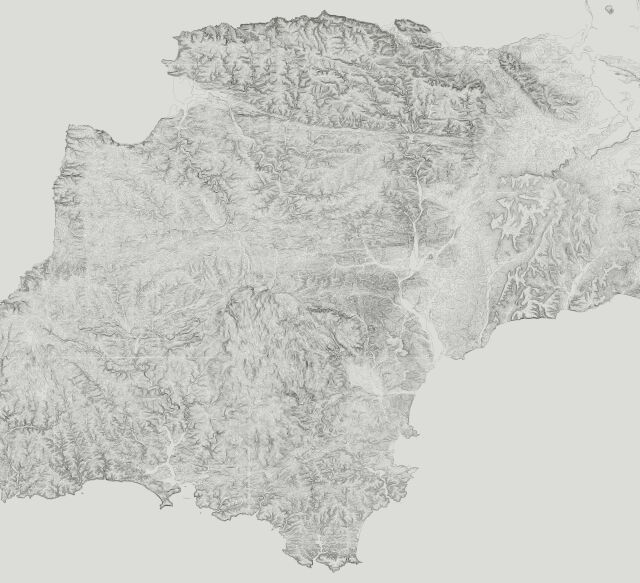
Holy Wells
Going back in time over the centuries sources of fresh water have always been precious. The quality of the fresh water was often determined by the geology and rock types and so in prehistoric times and the bronze age certain important settlements grew up in the vicinity of springs and rivers. It is likely that sacred water sites from ancient times were later blended with and adopted by Christian beliefs. I have sudied the locations of these wells, some being on classic settlement sites near springs and others seem to be along ancient routes near possible sacred sites. Others were created in more modern times and some have been lost in time.
There are many sites of Holy Wells and I have only covered a few of them here.

Saxon Well in Widecombe SX 717 767 can be found by the main road running through the village. It is recorded as a Holy Well and perhaps is on the original site of the spring that provided water to the settlement there since prehistoric times.
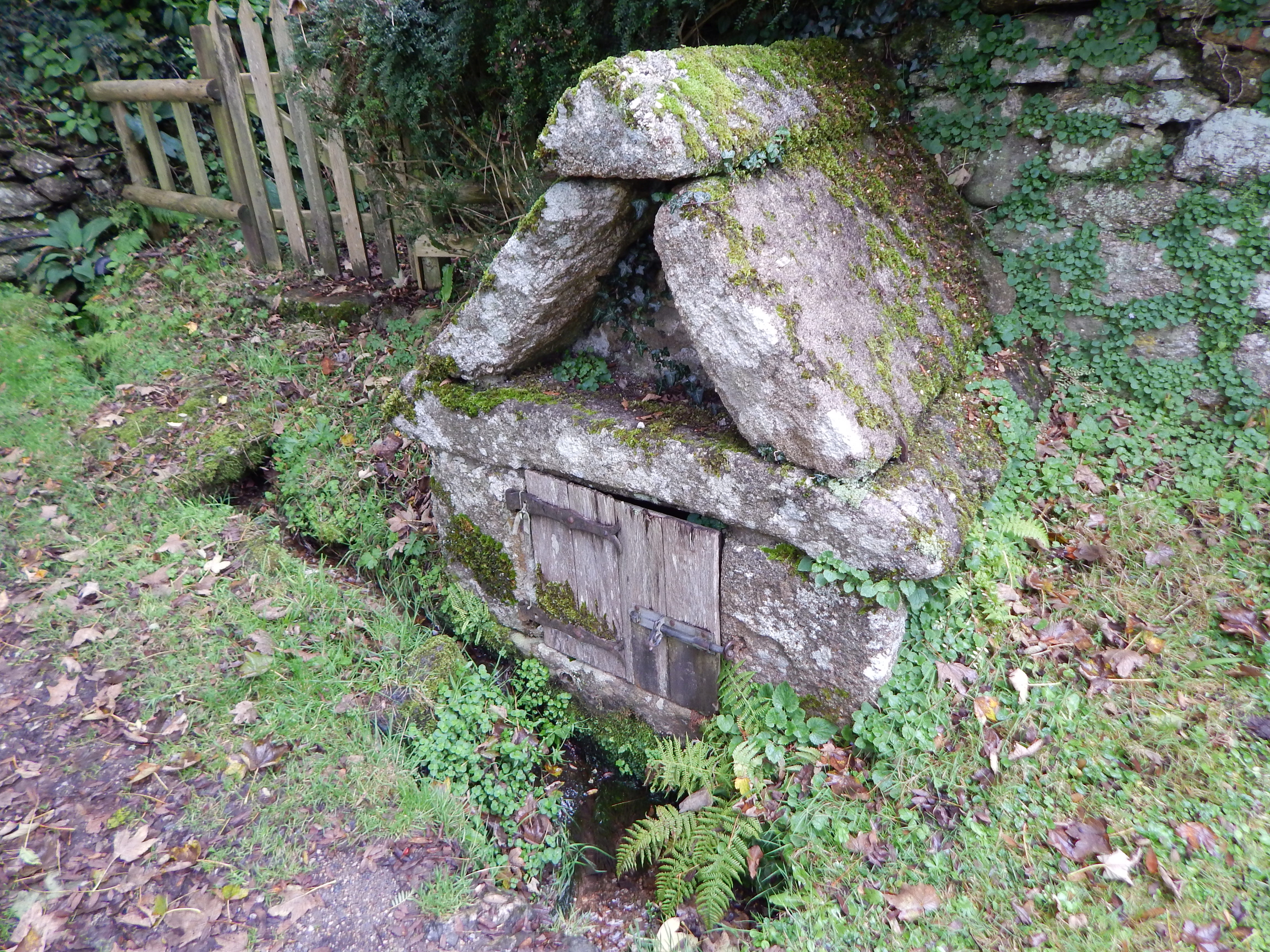
White Well in the Little Haldon Hills SX 913 748 is on the slopes overlooking Teignmouth. It makes use of good water springing out of the gravels there and was also used to supply water to the Bishop's Palace and fish ponds downhill.
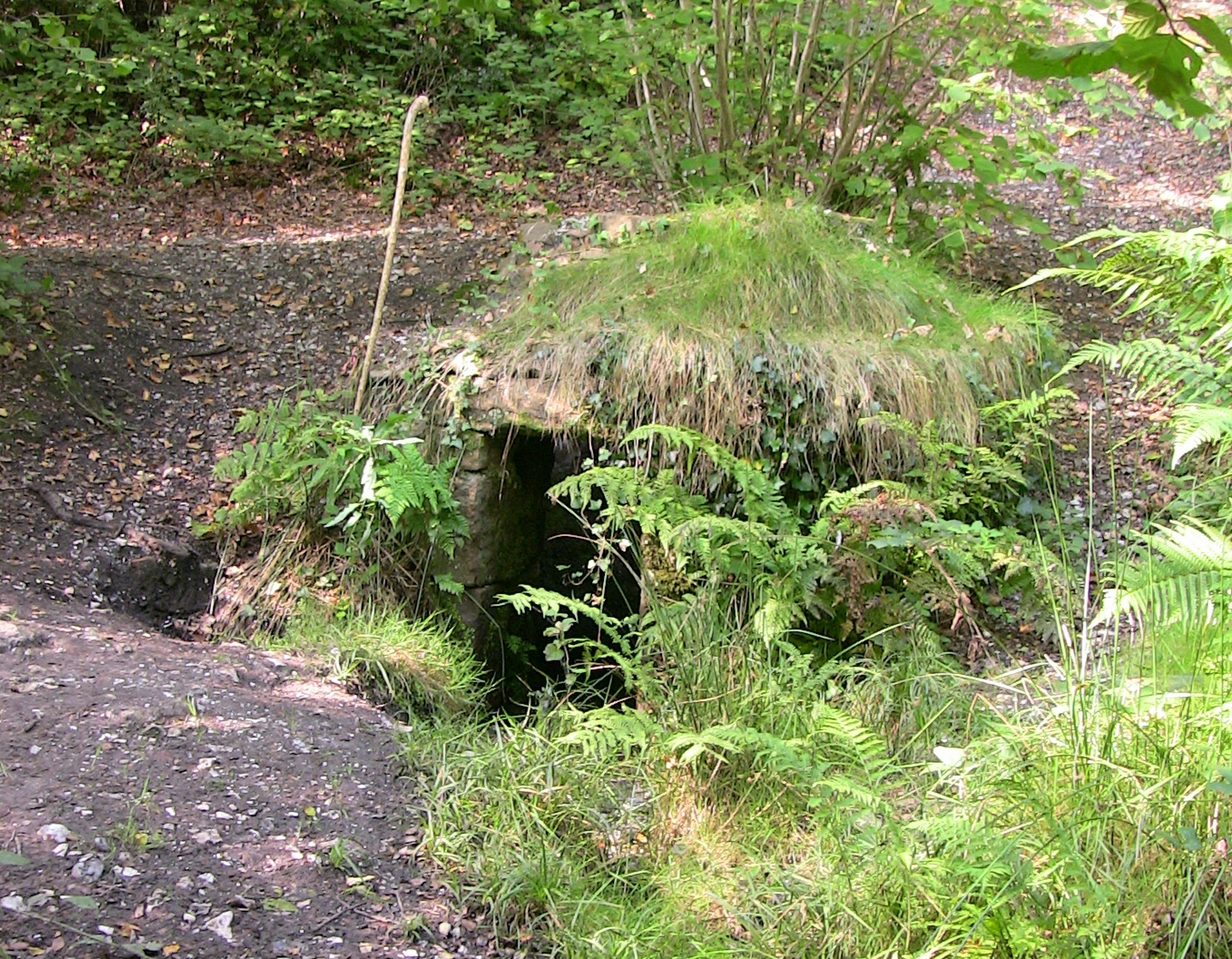
Shobrooke Well in the Crediton area SS 863 012 can be found build into a field wall in the lane not far from and north of the church. The site of the church is typical for settlment on a piece of land near to a spring and there are several places here where wells would have existed but this particular spot more away from the church was where the Holy Well was.
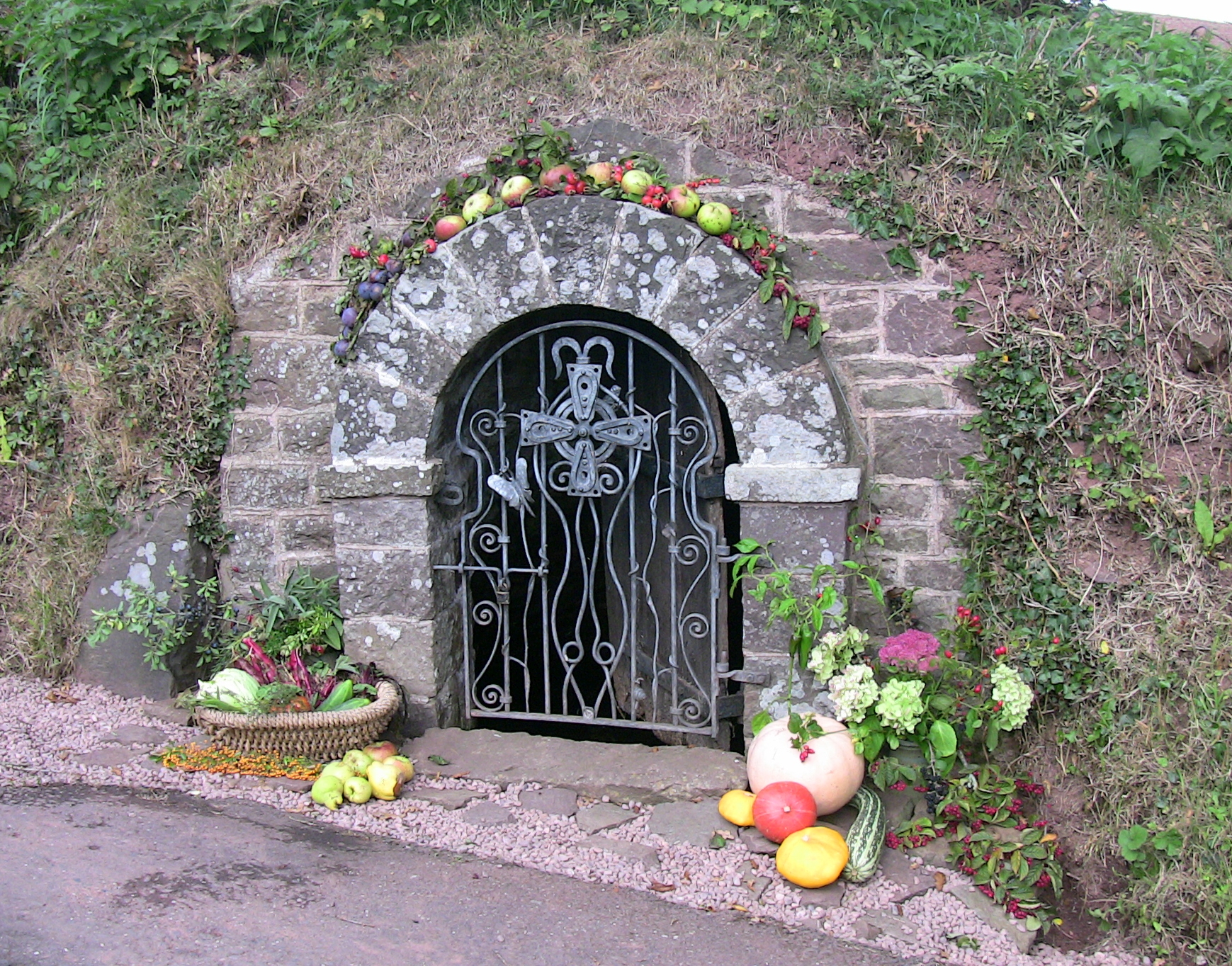
Leech Well in Totnes SX 800 601 is found tucked away behind the streets. Again this appears to be a site at the top of a valley where good water came from the rocks. The waters were said to be healing and a building was constructed around the well with several troughs. Totnes was always an important town so this was a centre for people to visit for healing.
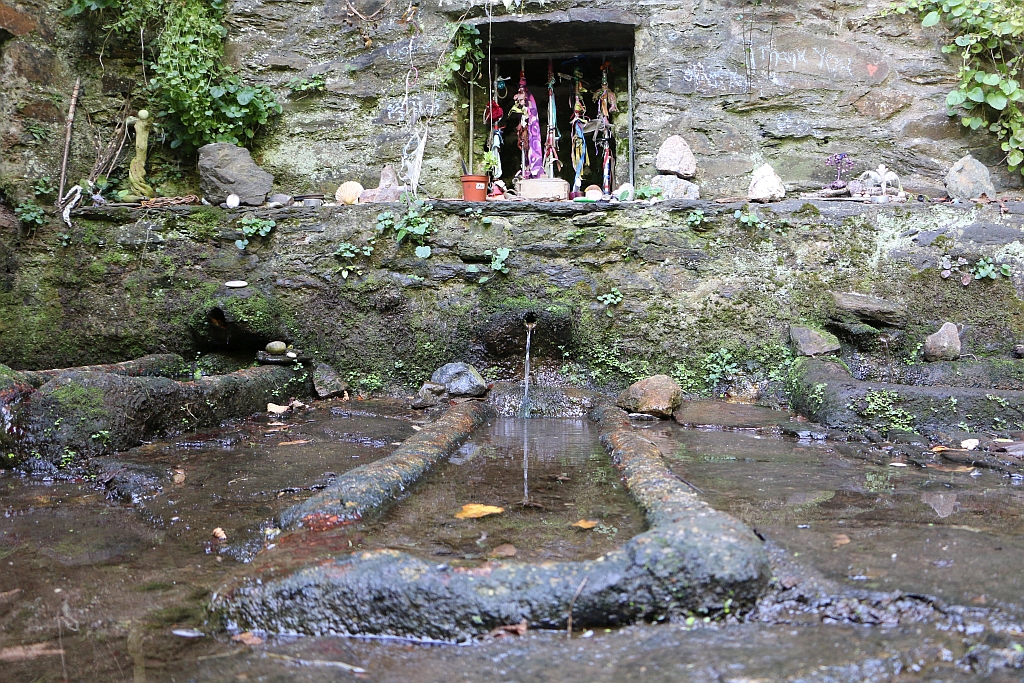
Caves
The geology of Devon is formed in places of limestone and within this rock caves can be frequent. Devon has a lot of caves, some more well known than others. Some were used as shelters in prehistoric times such as Ken't Cavern and Brixham Cavern where evidence of human activity was discovered. Some were used as burial places by the Roman's and some were only discovered in recent centuries when quarrying took place.
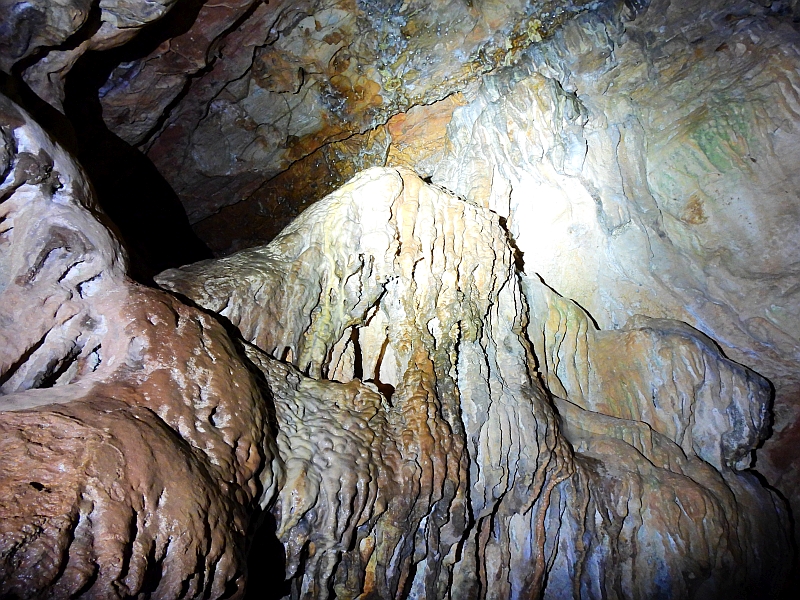
Pridhamsleigh is located near Buckfastleigh this is probably one the largest caves in Devon and has been regularly explored for decades. Though I am claustrophobic I was lucky enough to be given a guided tour of the easier passages a few years ago - I wanted to see this because of my interest in all things Devon history related and before I got too old for crawling around on my knee's!
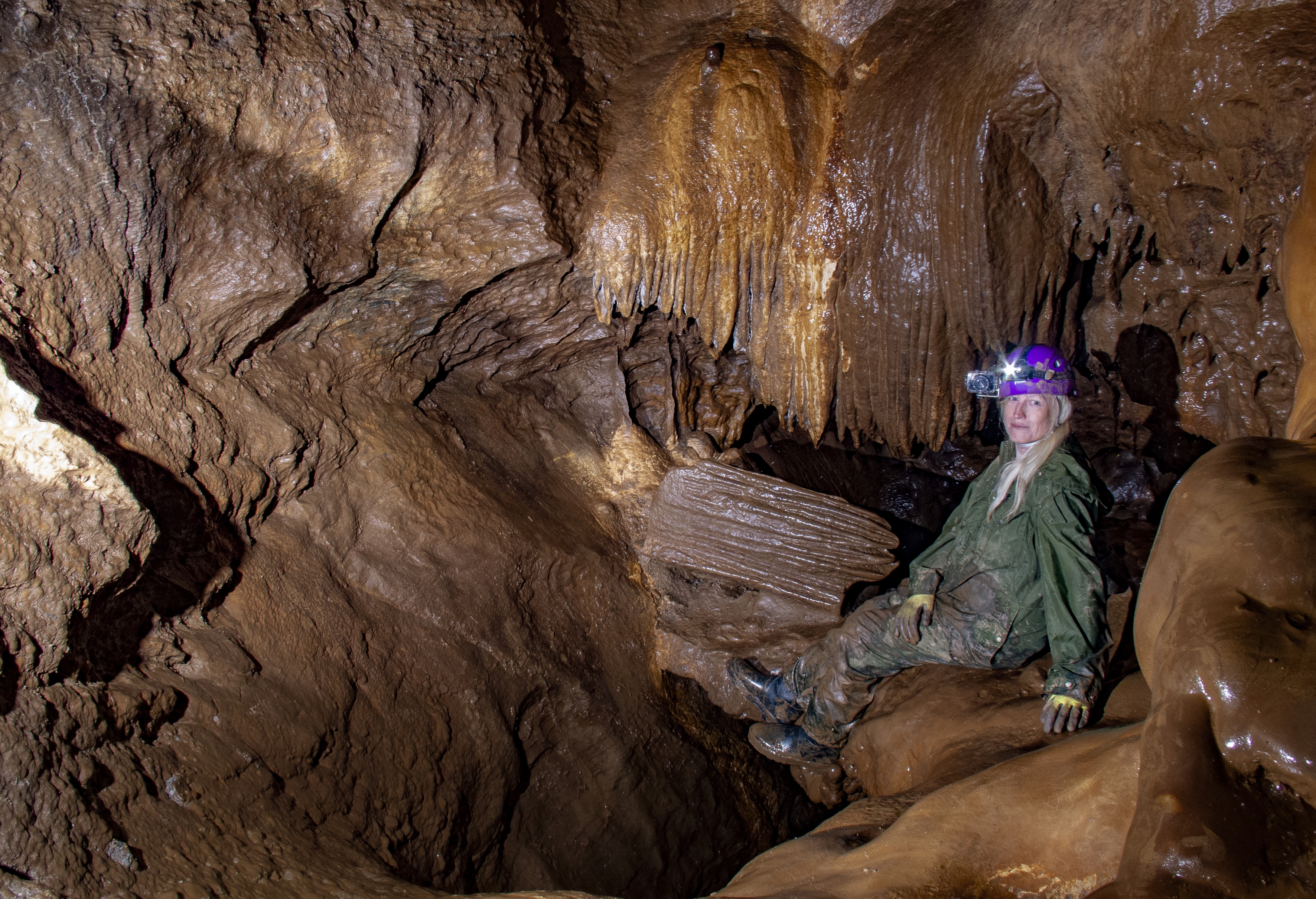
Sea Cave located on the coast of Berry Head which formed on a big fault line in the cliffs. The entrance is huge and high up in the cliffs where heaps of rocks have fallen over the centuries. Inside the sea comes and goes with the tides. I took this picture back in the 1980's when access was tricky but possible before the cliffs fell.
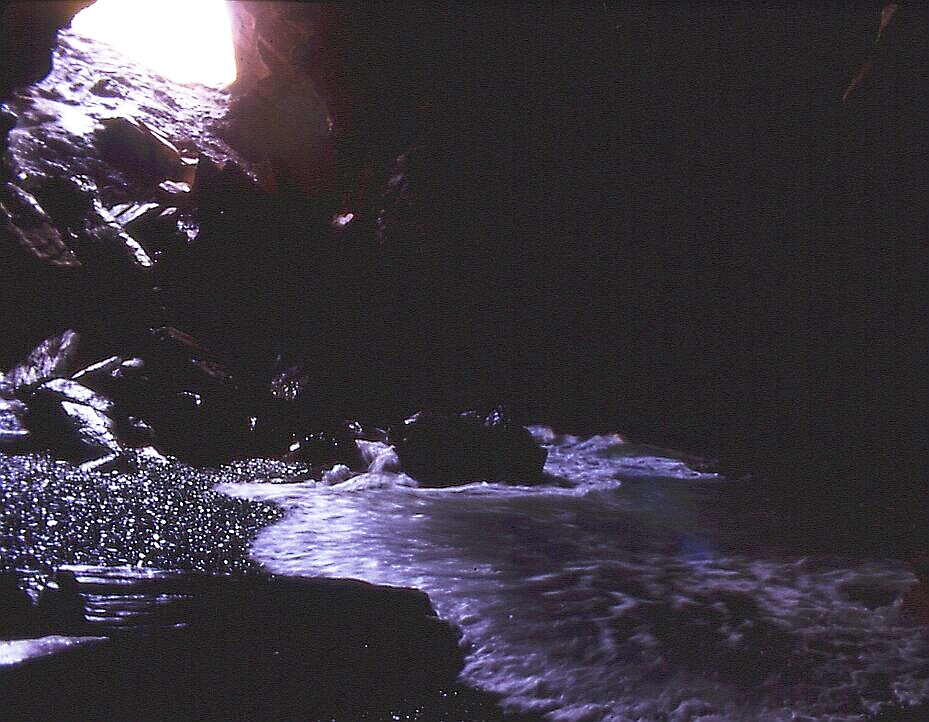
Bottle Collecting
In the 1970-1990 period I enjoyed digging for bottles and field walking for finds. Sometimes you would just stumble across random finds while out walking or find an old dumping site. Making finds was very educational not just about people who lived hundreds of years ago but also about everyday products used in the 1900's.

Before the formation of town council's in the late
19th Century people had to dispose of their own rubbish. In towns and
Cities this was a massive problem but from early times most resources
were well used and what was left was dumped nearby or carted out to
farmland and ploughed into the soil. In this rubbish was broken pots, bones, shells, street sweepings, manure and
ashes from fires - some of it helped to make tough soils easier to plough and the manure made it more fertile. That is why many gardens on housing estates have finds
in the soil because they were once farmland treated in this way. Locals would often also cart rubbish
and dump it in some convenient pit or throw it off a cliff or have their own dump in waste ground near a house or farm or mansion house.
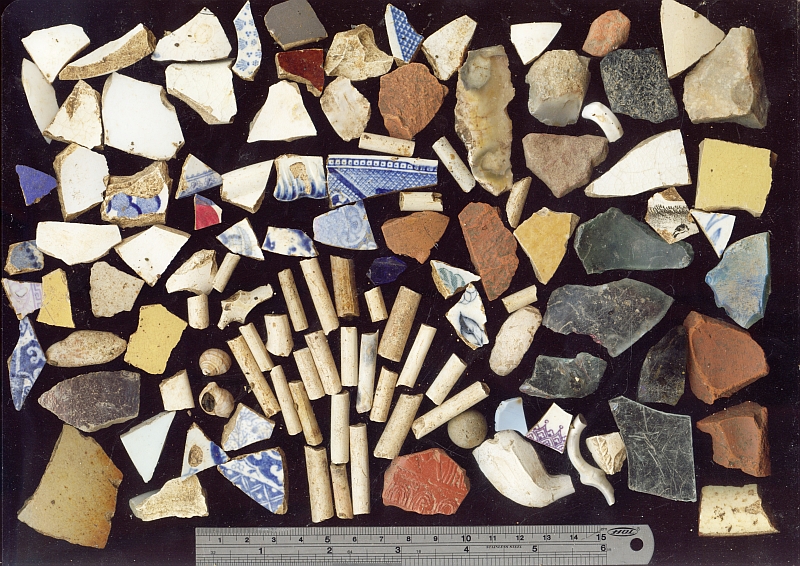
When population grew and councils were formed the
collection of rubbish was often managed by taking it to landfill sites
in the same way as it is today. Some was recycled but lots was used to
build up flooded land, infill between rivers and railways, filling up
old pits and quarries. If these old places can be traced and with
permission dug it can be very rewarding to recover and study the many
bottles, pots, ornaments and other things people threw out.

Clay Pipe Making Site Discovered
During 2014 and 2015 I was able to join North Devon Archaeological Society to investigate the possible site of an 18th century clay pipe making workshop. The site was brought to my attention by a local historian/detectorist and I got NDAS to do an important site dig.

The actual location of the kiln was never found but thousands of clay pipe pieces and kiln debris were dug up and recorded. The site seems to have come into use in the c.1690's and was used by several generations of the Pardon family of Merton. It seems that their heyday was most of that century but in decline by the 1800's or moved elsewhere.
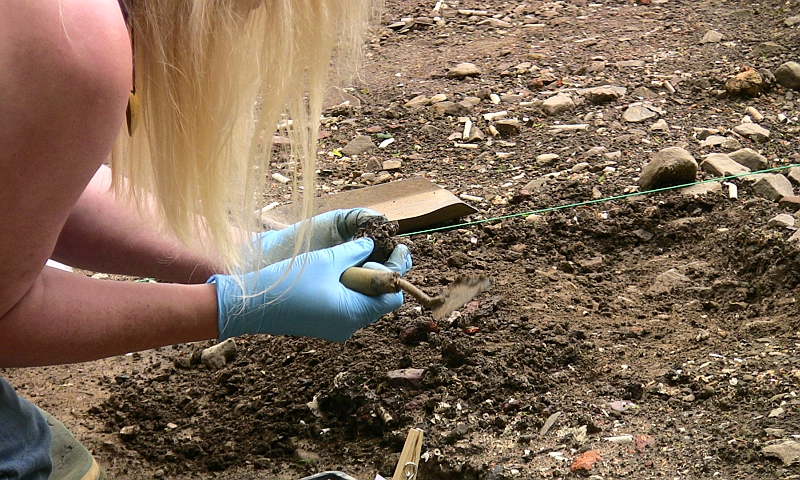
More than 45 styles of pipe were recovered giving a typology of patterns through several generations of the family, finds that tie in with others made by them found in sites in places like Newfoundland which all helps archaeologists to date other sites. I was invited to be involved in the writeup and drawing the pipes for the final report published in the 2019 Devon Archaeological Society Proceedings 77.
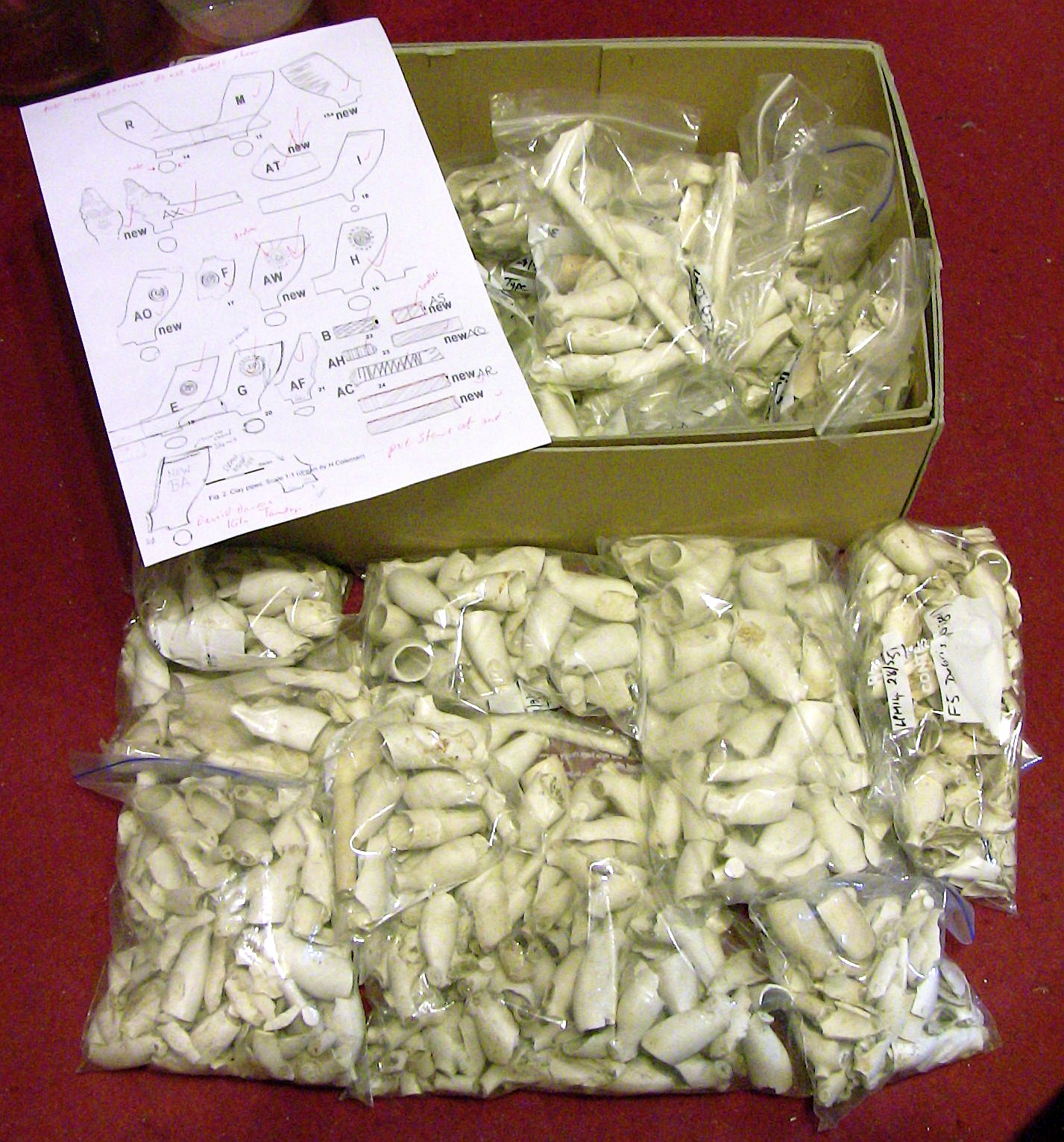
Devon's Old Trackways
For 11 years I made an extensive study of how trackways evolved in Devon. My aim was to see if I could work out where the oldest tracks in the county were and when they came into being and why - perhaps to even find some long lost features such as sacred sites, lost wells, Roman houses or important places where trade took place on main ancient routes - my study was intense taking hundreds of hours but I learned a lot.
I have dedicated a whole page to this subject so click the link below to read more.
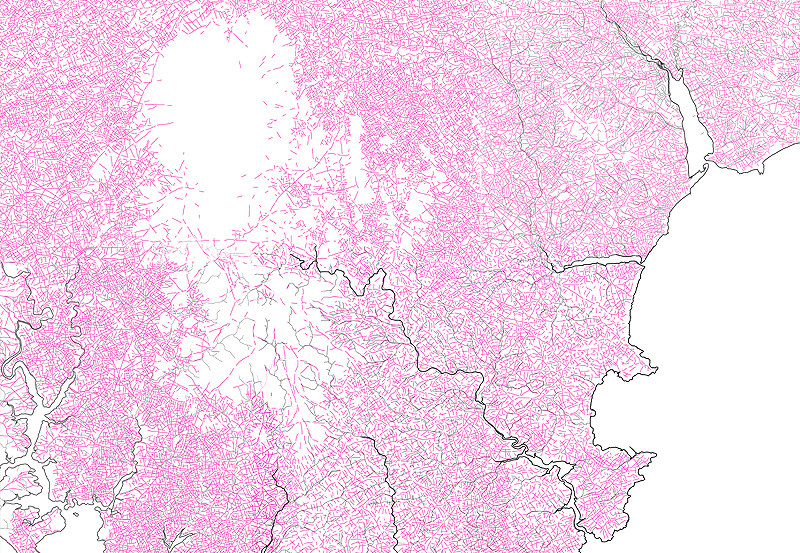
Devon Place Names
During my project studying the
1:25,000 O/S Historical Series maps I came upon quite a lot of place
names that
repeat and so I have made a list of these here. I was already aware that
other people have done studies on common Devon place
names and while a lot of them have ancient meanings it is such that some
place names might derive from another meaning due to
time periods in history and what society named them, and so
they can not all be assumed to refer to the same meaning. Another thing
to keep in mind is that in the past there were local variations in
language, so the original
sounding name is likely to have become something else over time, or
several place names might all sound similar but have differing spelling.
The list I have done here shows the most common names I have come across
and these are sometimes weaved within a longer name, for
example the name TON might be part of a town name such as Paignton, or
Lifton. I have therefore marked dots in front or behind the name to
assist. Have I missed any? I am sure I will have!

ALLER Derived perhaps from the Saxon name for alder tree
ASH Perhaps relating to the tree of that name
BLINDWELL Possibly from Norse/Saxon cul-de-sac or a sacred well with healing properties for eyes
BRENDON Place names common more often in North West Devon.
BEACON Usually a very high hill top where signals could be seen for miles
BARTON Some suggest an ancient courtyard form of farm
BUCK... Some suggest this relates to land favoured by Royalty where there were many Deer
...BURY Corruption of Berry or relates to a famous grave site (old English)
BERRY... Some suggest this derives from a hill or prominent outcrop in the landscape, perhaps a fortified one
BEER... Some suggest this means a sacred grove or often cognate to Byre
...BEARE... Some suggest this means a sacred grove
BLAGDON...
BURROW Sometimes cognate to Bury, or means grave site like a Barrow
COL... Perhaps derived from a name of a family or charcoal working
COLEHOUSE...
COLD HARBOUR
COWLEY Saxon Cow and a ley which is a woodland clearing, Ley also sometimes Leigh
CROFT Some suggest a small farmstead
...COTT Cottage, small dwelling Saxon/Old English
COURT A place where law and order were administered in the local area
...COMBE... Some suggest Saxon meaning a valley
CHAPPLE Perhaps derived from a nearby building or from a family name
CUL...
CAD...
DEAN
...DON Saxon cognate of Ton
...DEN
DREW...
EMLETT
ELLI...
ELLA...
FILLIEGH
FURZE... Some suggest this relates to the landscape being full of much gorse
HEMBURY
HOLWELL Thought to derive from the meaning Holy Well - a sacred well or spring which perhaps is in some cases a very ancient site
HOWELL Thought to derive from the meaning Holy Well - a sacred well or spring which perhaps is in some cases a very ancient site
HALWELL Thought to derive from the meaning Holy Well - a sacred well or spring which perhaps is in some cases a very ancient site
HUISH
HOL E
HOE
HAYES
...HAM Some suggest this means a Saxon settlement
HAYNE
HOLS...
HALS... in Norse means a narrow piece of land like a peninsula, literally neck/throat
HALSE in Norse means a narrow piece of land like a peninsula, literally neck/throat
INGO Possibly derived from a Scandinavian/Saxon origin. A male name meaning protection of the Germanic God Yngvi
KELLAND
KNOWLE Likely to relate to a nearby curved hill form
KINGS... Some suggest this relates to special land belonging to the King or a place where a King visited
...LEIGH Saxon, a clearing as Ley
...LEY Saxon, a clearing
NETHER... Some suggest a farm settlement on the far edge of a parish, others suggest a deep valley place
NYMET
PARK Sometimes refers to an ancient Deer Park, however, in Tudor/Medieval times land owners often defined
portions of woodland or enclosed open land for grazing of animals and hedged them in often refering to them as a park
PIN...
POLT...
POUND
RADDON
RAWTCLIFF
RADCLIFF
RIX...(WRIX...)
RAD...
RANSCOMBE
RYDON
STOW...
SHILL or Shoal or Shell... Overhanging rock or rocks formed over a grave.
SHUTE
...THORNE... Common in Devon and moreso in West and Mid Devon
...TON Usually considered to be a Saxon term for a settlement
VENN...
WHIT...
WHIDDON
...WORTHY
...WICK Wik/Vic in Norse means harbour, also cognate in Saxon meaning estuary. Perhaps also Roman settlement.
...WEEK Similar to Wick?
...WYKE Similar to Wick?
YELLAND Some suggest last remaining land where ancient Devon people lived
ZEAL Some suggest an establishment serving monks
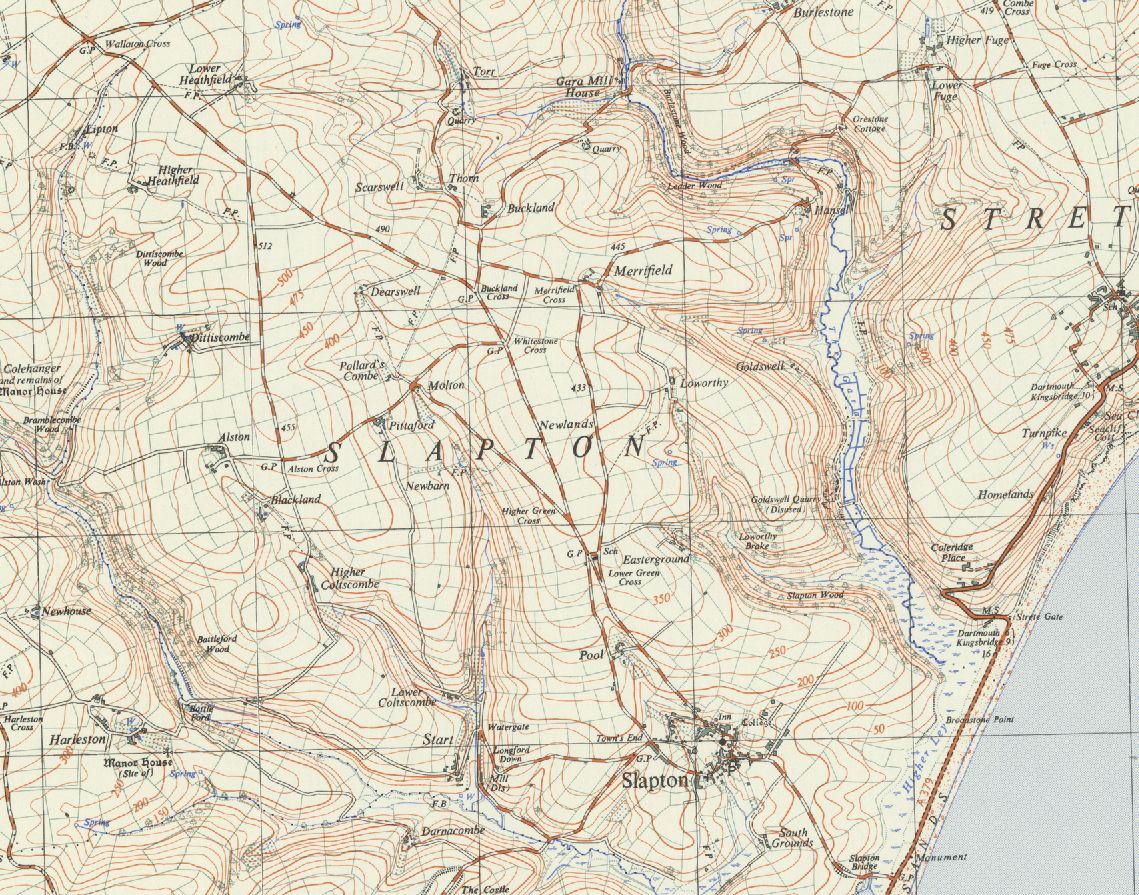
Discover the magic of Studio Devona!
Immerse yourself in traditional crafts, various creations and interests rooted in and inspired by the ancient landscape of Devonshire.
Get in Touch with
Devona
Lea-Croft Cottage, Cheriton Bishop, Devon. EX6 6JH